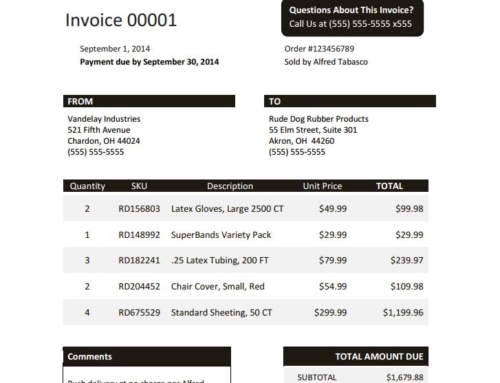You have weighed the pros and cons of extending credit to customers, have deemed the customer in question to be a good credit risk, and now you need to figure out how much credit to offer. This is not something to gamble on, setting credit limits that are appropriate is important to ensure you are giving the customer what they need, but also protecting your organization against financial instability.
Tired of manually tracking follow-ups using spreadsheets? Try Lockstep Inbox, our accounting Inbox that will allow you to better manage customer communications in minutes.
Here are three ways to determine credit limits for customers to help you reap the benefits of credit sales while mitigating the risks.
THE NET WORTH CALCULATION
The result of this calculation gives you a credit limit based on the customer’s net worth, limiting your risk and providing strong credit limit benchmarks based on concrete financial information. A best practice it to limit the credit offered to 10% of the customer’s net worth.
The first step is to attain the company’s financial information, this can be done by requiring them to fill out a credit application. After receiving the information, the balance sheet should include the customer’s total assets and total liabilities. From there you can work the equation:
Net Worth= (customer’s total assets-total liabilities) / 10
The result will be 10% of the customer’s net worth and a good benchmark for setting their credit limit. You may also consider basing their limit on 10% of the customer’s working capital or average monthly sales.
TRADE REFERENCE CALCULATION
Trade references can be found on credit reports or by contacting the references provided by the customer on their credit application. This will give you an idea of how much other creditors or competitors have extended to the customer, something you can mirror if it seems fitting. Another way to use trade references to determine credit limits is by finding the median value offered by other creditors.
NEEDS-BASED CALCULATION
How much credit did your customer ask for? While you do not need to blindly offer them what they ask for, taking it into consideration is vital to ensure you are offering them a limit to satisfy their needs; an important part in building a lasting relationship with the customer, one of the benefits of offering credit terms in the first place.
BEST PRACTICE
While these are separate credit limit calculations, it is a commonly accepted best practice to find the average of all three of the above calculations and use that as your starting point for determining the customer’s credit limit. Once you have that average, you can raise and lower the credit limit based on other information you have on the customer through previous experiences with them or information from other sources such as a credit report, liens against the company, lawsuits, etc.
Remember, a credit limit is not set in stone. You can and should consistently re-evaluate your customer creditworthiness and keep tabs on their financial health as they continue to work with your organization. How often should you re-evaluate? What policies and procedures need to be put in place? What steps must be taken to collect payment from these customers? All of that and much more should be covered in your company’s credit policy.
If you would like to learn more about how you can benefit from connected accounting solutions, please contact Lockstep or visit us at www.lockstep.io.




